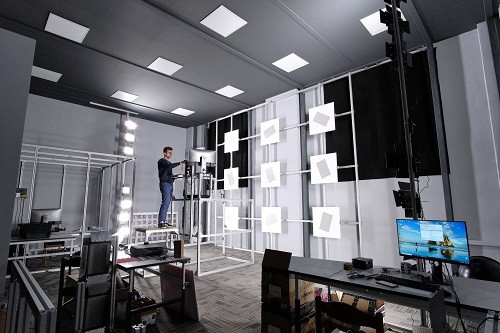As Framos turns 40, we talk to the firm’s CEO, Andreas Franz, on diversifying into vertical markets outside factory automation
‘The distribution model has become a tough business.’ Dr Andreas Franz, chief executive of Framos, is clear about this. But Framos has come a long way from being the pure distributor – albeit still an expert in imaging – it started out as 40 years ago, when his father, Bernd Franz, set up Framos Electronic Vertriebs as an electronics distributor before entering the vision market with Sony CCD sensors.
Andreas Franz explains that, today, any business Framos does involves adding a service of some kind, whether that’s consulting services, hardware or software development, all the way up to production management. ‘It’s still a distribution core,’ he says, ‘but around that we offer all the elements to help customers build cameras and get the best out of their image.’
Franz, who took over managing the company in 2008, says that, in this way, Framos can halve the time to market for its customers by improving their development cycle, and enabling high-volume production they couldn’t do themselves.
In the 1980s, when Framos was starting out supplying Sony CCDs, all of its customers were camera builders, and until the early 2000s most of the applications were inside the factory. Now, the customer groups vary widely, and the majority of Framos’ business is not factory automation but applications in sports, entertainment, medical settings, cameras on drones and many others. ‘The industrial side is still strong and is still growing, but other areas are growing faster,’ Franz says.
The move from CCD to CMOS also changed Framos’ customer group, with competencies gradually shifting more towards software rather than hardware. This is combined with the fact that, now, the entire architecture is moving from PC-based to edge devices or cloud-based architectures. This triggered Framos’ expansion into the processor landscape.
‘We now have a relationship with Nvidia and Intel,’ Franz says. ‘We didn’t touch them before and we don’t have distribution partnerships with them; we are technology partners because we develop on, and around, their ecosystem. That’s only possible because the entire architecture changed.’
Today, Framos generates annual sales of around €60m and has 170 employees worldwide. It began as a family business, but has turned into what Franz describes as a ‘family spirit’ business, because now decisions are made by a management board of 10 people as a team effort.
The company continues to build on its imaging expertise and the services it can deliver to its customers. It runs training courses on aspects such as the colour pipeline of digital cameras and characterising cameras according to the EMVA 1288 standard. It also now provides sensor-specific image tuning for the Nvidia Jetson platform to maximise image quality through an in-house laboratory it has set up.
‘It’s easy to get an image out of a sensor,’ Franz says. ‘But there’s a lot of things you need to do to make sure you get the best results from the image.’ This takes time, with Franz estimating that if developing the basic camera concept takes three months, it can take three times longer to get the best out of an image. ‘The combination of sensor and lens, and optimising the output with the driver, is where we can improve the application,’ he says. He adds that this has a direct impact on edge processing, where it’s important to optimise the image to minimise power consumption and get good results when working with neural networks.
Framos engineers will work with the customer to decide on the best architecture for the application. ‘Most of our new customers think about embedded architectures,’ Franz says. ‘We have no new customers where this is not a discussion. Whether it ends up as edge processing depends on the application.’
Franz sees the machine vision industry continuing to change, with a lot of consolidation and price pressure resulting from this. There are also political tensions between the Asia region and North America and Europe, which is having an impact on technical architectures. In addition, some of Framos’ customers are now demanding an audit of the firm’s supply chain, to track where all components are sourced from, which increases the cost of doing business.

The company’s in-house lab was set up to provide sensor-specific image tuning for the Nvidia Jetson platform. Credit: Framos
The shortage of semiconductor components is another challenge facing the vision industry. Franz expects potential delays in semiconductor supply chains to last for the next 12 months, and that there could be side effects later down the line, where either companies cannot deliver or too much stock is available. ‘Everyone is on their toes to handle the situation,’ he says.
Business models of large companies like Sony or Intel are also changing. Machine vision is now a market of interest to these firms and they are starting to provide more vision solutions. ‘As the business model changes in these large companies, it can impact us smaller machine vision companies,’ Franz says. ‘That’s an old threat. But with the development towards edge processing, this could be a new competitive landscape, so we need to be prepared.’
Franz is optimistic about the future irrespective of these challenges. ‘Vision is still at its beginning; it’s the coolest industry to be in,’ he says. ‘There are so many developments, in sport, in home robotics, in retail, [and] many examples that are not a reality yet but will come. For all of this you need imaging.’
Framos plans to hire more engineers and expand further in different areas of imaging, from optics to software, as well as in different vertical markets. It will also evaluate whether to expand further in Asia.
‘The overall goal stays the same: to get the most out of the image for our customers,’ Franz says, adding: ‘For the next few years we will be focusing on applications.’ He gave the example of automatic walkout supermarket checkouts, which are not yet a reality and will need imaging to work.
‘The industrial approach is needed for new vertical markets,’ he continues. ‘All of them start cheap, but learn the importance of a good image and that’s a chance for us to say you need to use industrial components and standards. The industrial approach is an opportunity to get into these emerging markets. Perhaps it is tough to handle first-tier automotive, but we can handle robots, medical devices, drones and thousands of other applications, and that’s a big opportunity.’


